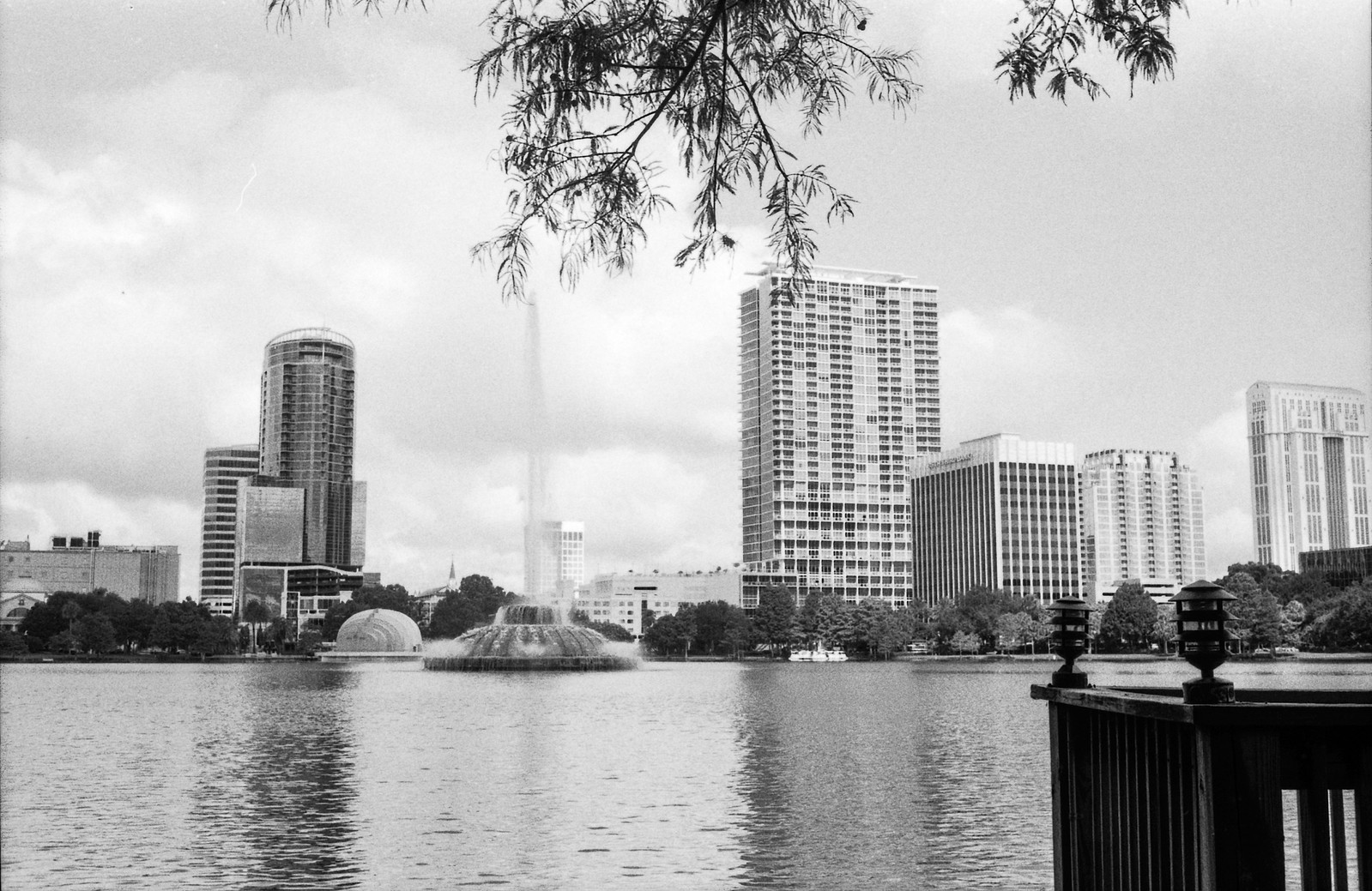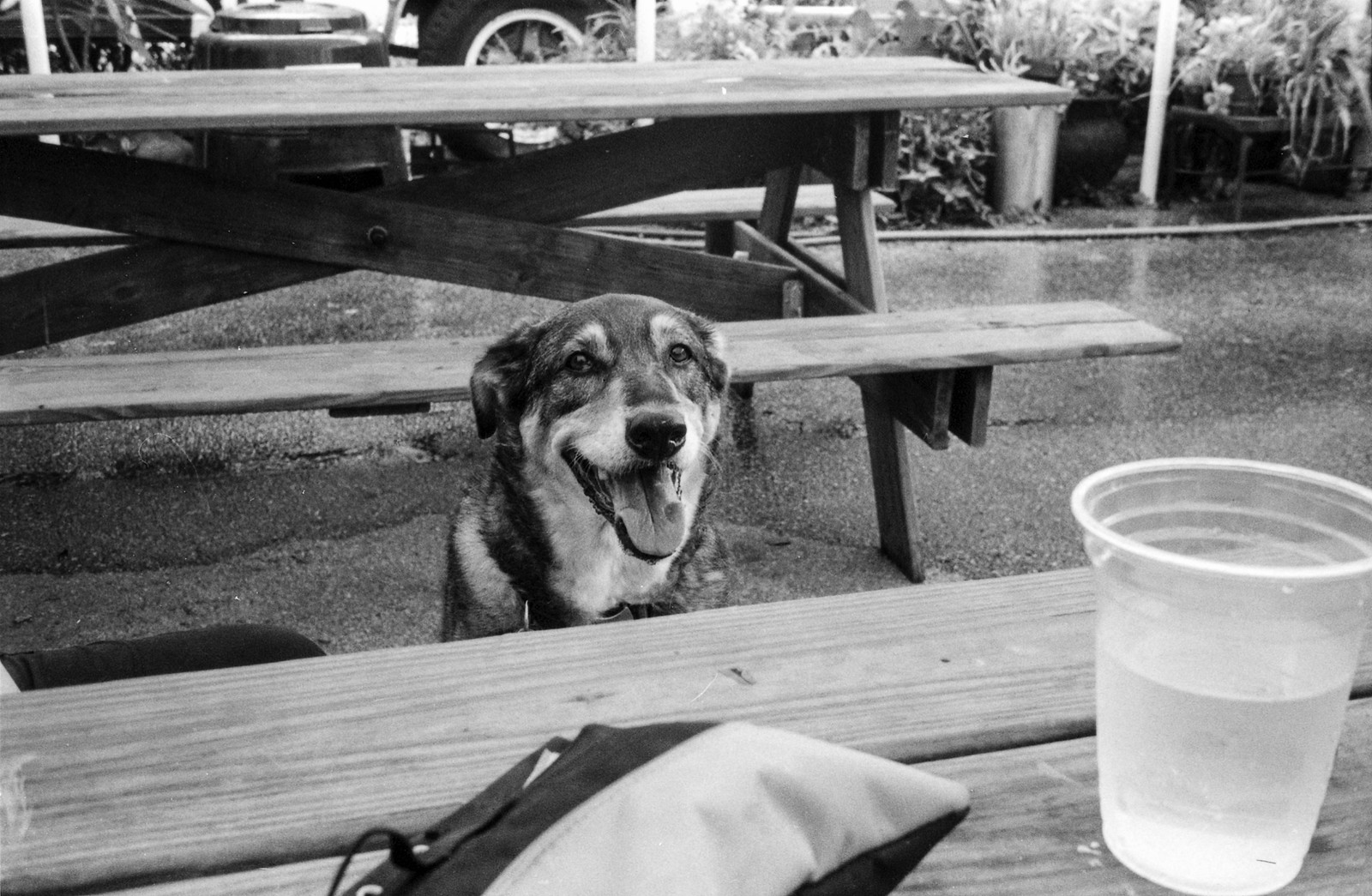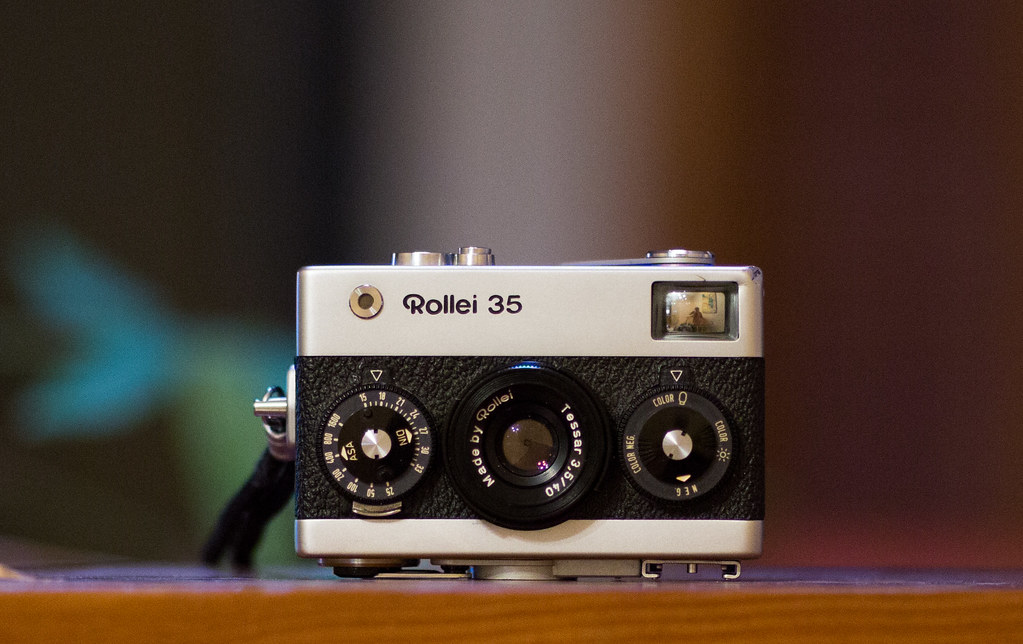The Rollei 35 is a scale focusing camera. There are no rangefinder windows, microprism spots, or split image rangefinder spots. To focus, you estimate the distance to your subject in your head, and then turn the focus ring until that distance is within the focus range markings for your particular aperture.
The shutter speed and aperture settings are selected by rotating one of the two dials flanking the camera. On the front of the aperture dial, you can select the ISO, and on the front of the shutter speed dial is an informational setting for the film type you've loaded.
The shutter is locked when the lens is in the retracted position. By pulling out the lens and twisting slightly to lock it, the camera is ready to shoot. A button on the top panel releases the lock to return the lens to its closed position.
 It's a pretty amazing feat of compactness and quality. It can (and did, in my case) take a real beating with no noticeable effects on operation. It looks great. There is no automatic operation of any kind, so the user selects the aperture and shutter speed using the dials on the front of the camera. The metering is a match needle system, visible on the top panel of the camera. An orange needle sits in the display which corresponds to the user's setting of aperture, shutter speed, and ISO. A full time white needle corresponds to the reading of the light sensor, and the user adjusts the settings to ensure that the two needles line up in the display.
It's a pretty amazing feat of compactness and quality. It can (and did, in my case) take a real beating with no noticeable effects on operation. It looks great. There is no automatic operation of any kind, so the user selects the aperture and shutter speed using the dials on the front of the camera. The metering is a match needle system, visible on the top panel of the camera. An orange needle sits in the display which corresponds to the user's setting of aperture, shutter speed, and ISO. A full time white needle corresponds to the reading of the light sensor, and the user adjusts the settings to ensure that the two needles line up in the display.But the focusing! I know, it's more about user error than anything else. But this camera can really make you feel stupid if you aren't particularly good at judging distances. The focus ring only has about 100° of travel from 3 feet to infinity, so the entire distance scale is crammed in there. The focus range indicator is also quite small as a result.
The upshot is this: if you're dimensionally challenged as I often am, the range of f/3.5 to about f/5.6 should be avoided entirely. I manage to get lucky every so often, but for the most part I end up with a a frame that's slightly off focus, and it's frustrating. If you're shooting at f/8 or smaller, you're more likely to have good results.
 There are a couple of minor issues in the use of the camera. The light sensor is a small spot in the upper corner on the face. It's the perfect place for your finger to inadvertently cover it, or at least cast a shadow over it, when metering and setting the aperture. The battery (which is the old PX625 mercury battery) is actually located inside the camera directly above the film canister. This means that if the battery dies mid-roll, you can't change it until you've removed the film. Oh, and the flash shoe is on the bottom of the camera.
There are a couple of minor issues in the use of the camera. The light sensor is a small spot in the upper corner on the face. It's the perfect place for your finger to inadvertently cover it, or at least cast a shadow over it, when metering and setting the aperture. The battery (which is the old PX625 mercury battery) is actually located inside the camera directly above the film canister. This means that if the battery dies mid-roll, you can't change it until you've removed the film. Oh, and the flash shoe is on the bottom of the camera. It's really robust, though. On mine, almost every corner is dented from one mishap or another. At one point I dropped it from several feet up, onto the concrete. It bounced several times before coming to rest. It did bend one rail on the flash shoe a little, but the camera's operation was completely unaffected.
It's really robust, though. On mine, almost every corner is dented from one mishap or another. At one point I dropped it from several feet up, onto the concrete. It bounced several times before coming to rest. It did bend one rail on the flash shoe a little, but the camera's operation was completely unaffected.Image quality with the Tessar 40mm f/3.5 lens seems to be pretty good. I don't have a lot of great examples unfortunately, because I just don't use it often enough.
Since the Rollei 35 has no mirror, its operation is relatively quiet with the only noise coming from the shutter itself. This, combined with its small size, makes it suitable for street photography and in scenarios where you don't want to be broadcasting the fact that you're taking pictures. On the other hand, the 40mm lens is a bit narrow for street photography, and I would have preferred something in the 28mm to 35mm range.
 Overall, it's a decent, usable camera as long as you're shooting in daylight and can shoot at small apertures. However, if you need to shoot wide open, you'd better be ready to be pretty exact in your measurements!
Overall, it's a decent, usable camera as long as you're shooting in daylight and can shoot at small apertures. However, if you need to shoot wide open, you'd better be ready to be pretty exact in your measurements!

No comments:
Post a Comment